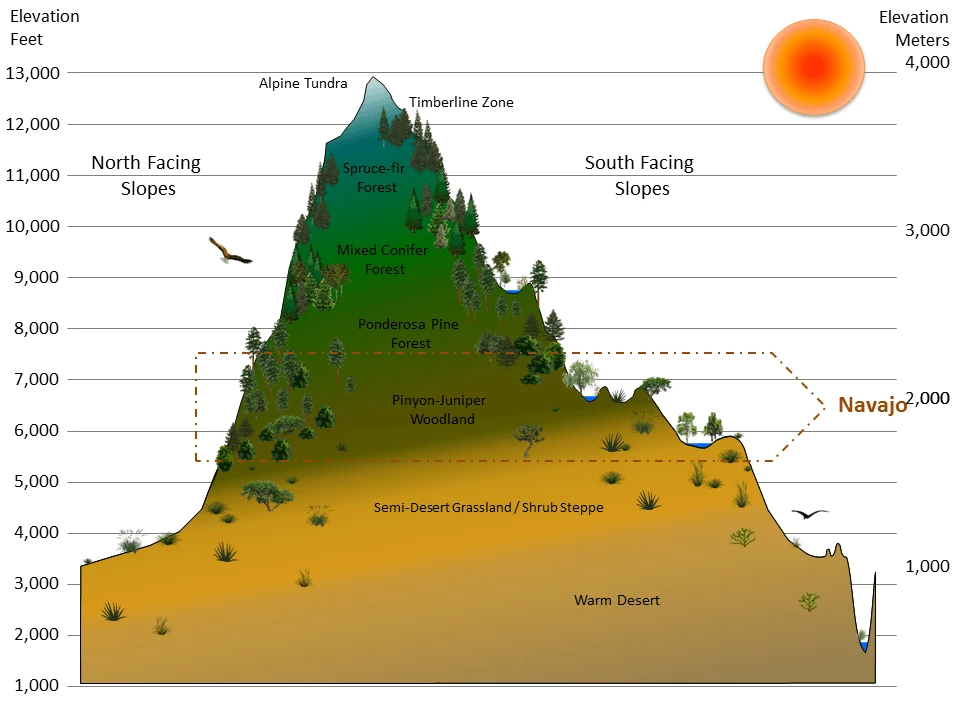
NPS
Navajo National Monument is comprised of three units, totaling 360 acres (146 ha) surrounded by Navajo Nation lands in north-central Arizona. It is cooperatively managed by the Navajo Nation and the National Park Service (NPS).
The monument was originally established in 1909 as one unit to protect three exceptionally large and well preserved Ancestral Puebloan dwelling sites, but was redefined three years later as three separate units. The monument headquarters occupy 240 acres (97 ha) of Navajo Nation land under a Memorandum of Understanding between the NPS and the Navajo Nation. The cultural and natural resources of Navajo National Monument are central to the spiritual beliefs of the Hopi, Navajo, San Juan Paiute, and Zuni Tribes.
Navajo NM is on a portion of the Colorado Plateau where uplift and erosion have carved deeply incised canyons into layers of sandstone. The monument supports a diverse array of vegetation communities associated with elevational variation and mesic canyons. Ponderosa pine, mixed conifer, and subalpine forests, and pinyon-juniper woodland are found at higher elevations within the monument, and desert shrublands and grasslands are found at lower elevations. Riparian communities on the canyon bottoms consist of aspen remnants, fir, and oak. Navajo NM supports 4 amphibian, 146 bird, 53 mammal, and 9 reptile species. Both Keet Seel and Inscription House units are located alongside perennial streams, and all three units have seeps and springs associated with them.
Select a Park:
Select a Species Category (optional):
Visit NPSpecies for more comprehensive information and advanced search capability. Have a suggestion or comment on this list? Let us know.
Life Zones
Navajo National Monument ranges in elevation from 5,438 to 7,524 feet (1,658–2,294 m) and spans three life zones: Semi-Desert Grassland/Shrub Steppe, Pinyon-Juniper Woodland, and Ponderosa Pine Forest. Moist, north-facing canyon slopes of the Betatakin Unit also support relict populations of Douglas-fir, typically associated with the Mixed Conifer Forest life zone. The monument experiences an average annual precipitation of 11.8 inches (301 mm).

Climate Summary Chart
Charts are an effective way to summarize and graphically represent climate variables. The following chart is based on the diagrams developed for vegetation studies by Walter and Lieth in 1967. Visit our climate page for more information.

Reports & Publications
Inventories are point-in-time surveys that help us learn about the resources in our parks. Information obtained through the Southern Colorado Plateau Network’s inventories of park resources helped to establish a base level of data, which has served as a starting point for our natural resource monitoring.
Source: NPS DataStore Saved Search 3515 (results presented are a subset). To search for additional information, visit the NPS DataStore.
Source: NPS DataStore Saved Search 3471 (results presented are a subset). To search for additional information, visit the NPS DataStore.
Source: NPS DataStore Saved Search 3280 (results presented are a subset). To search for additional information, visit the NPS DataStore.
Last updated: February 10, 2021
